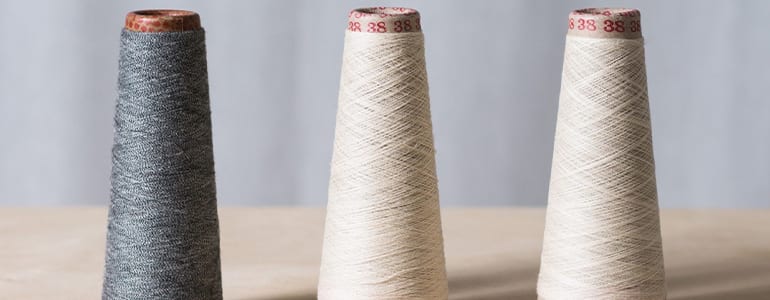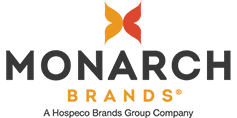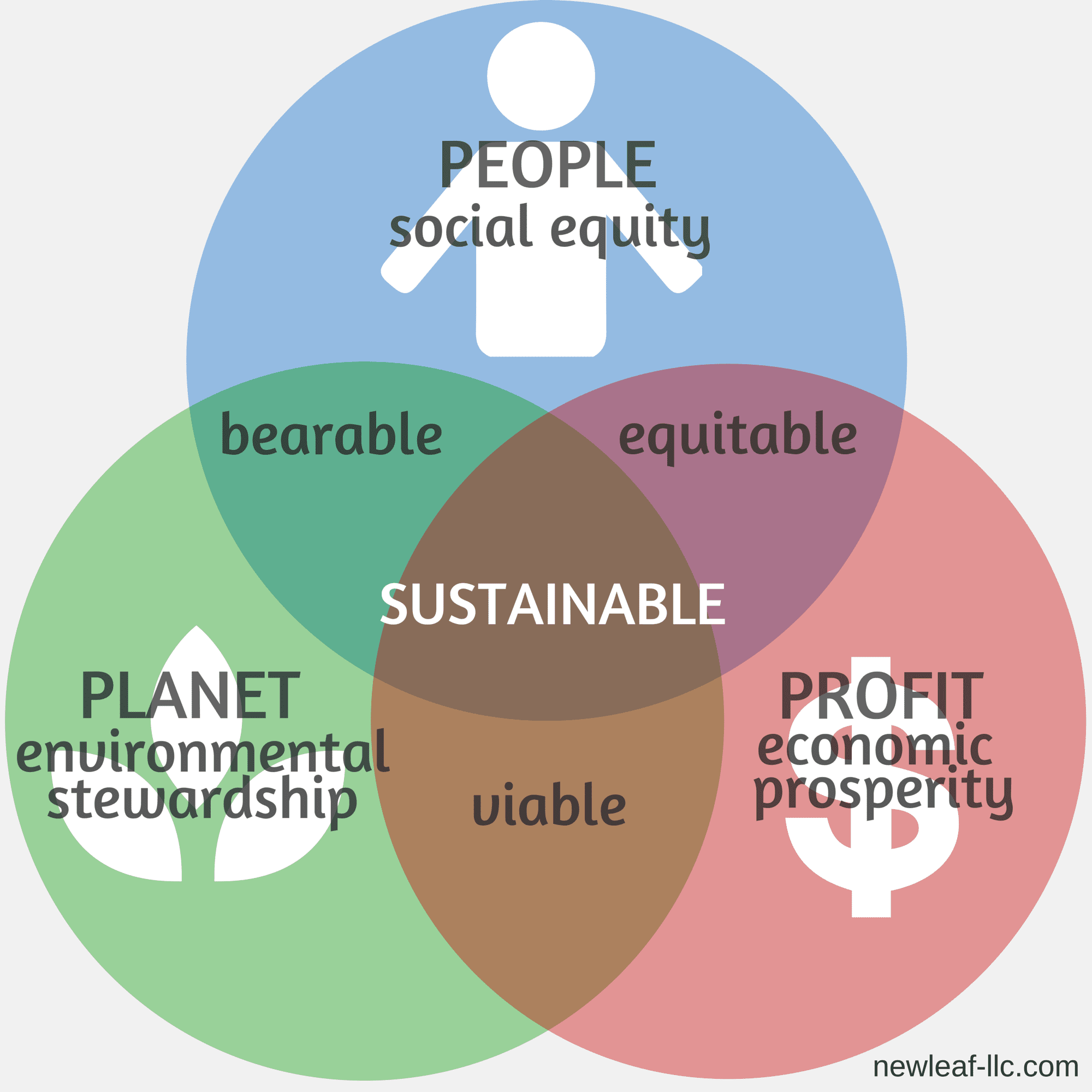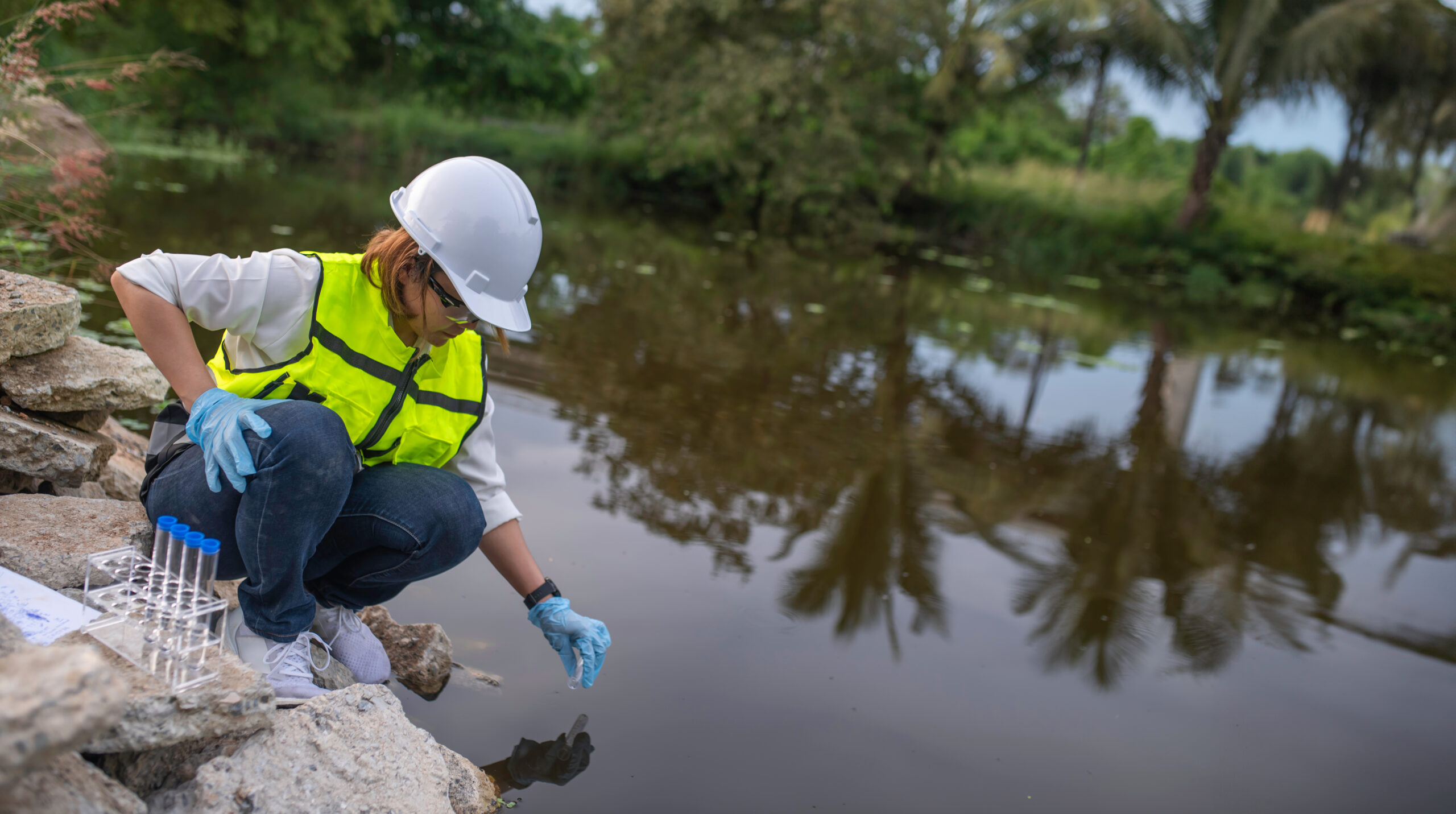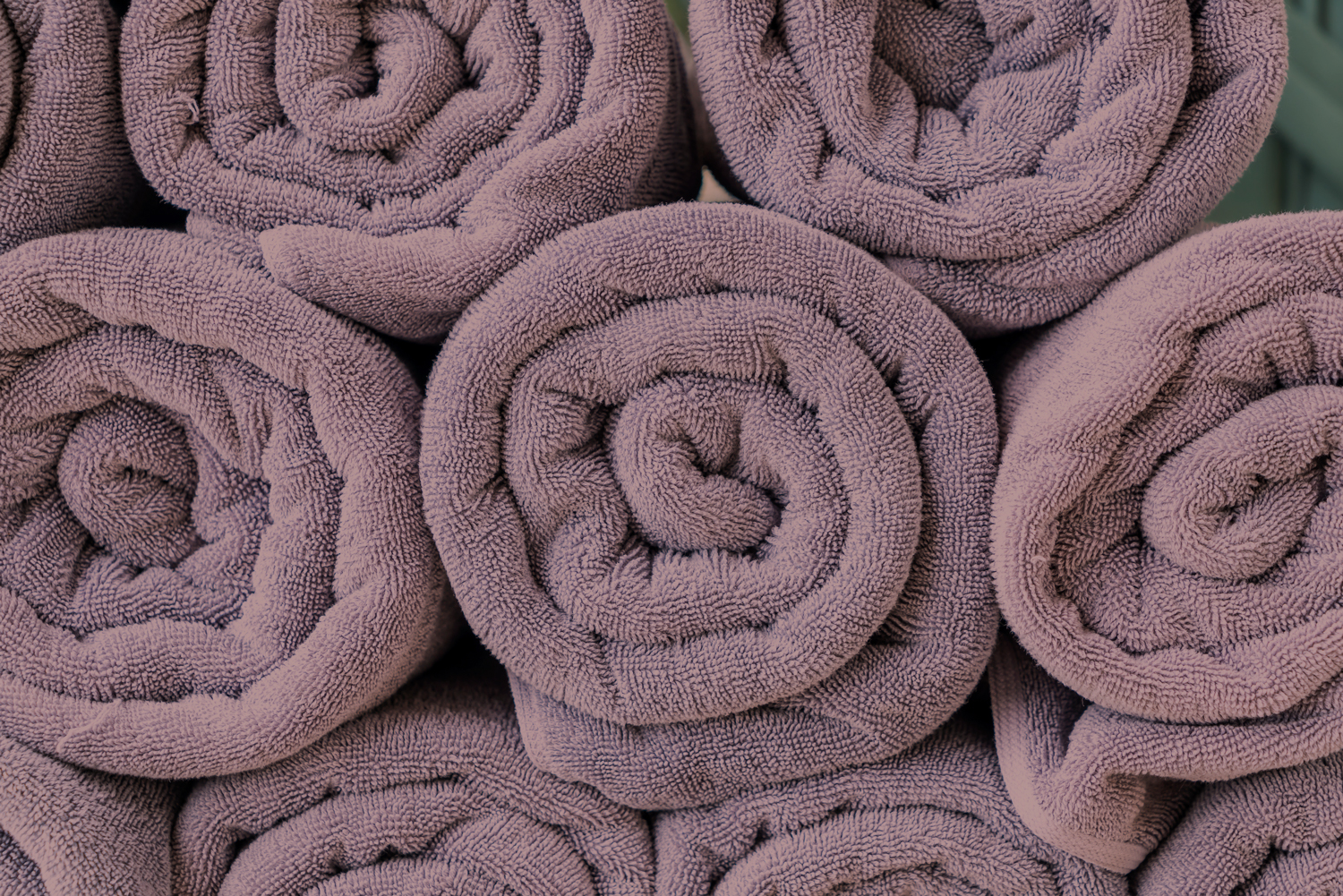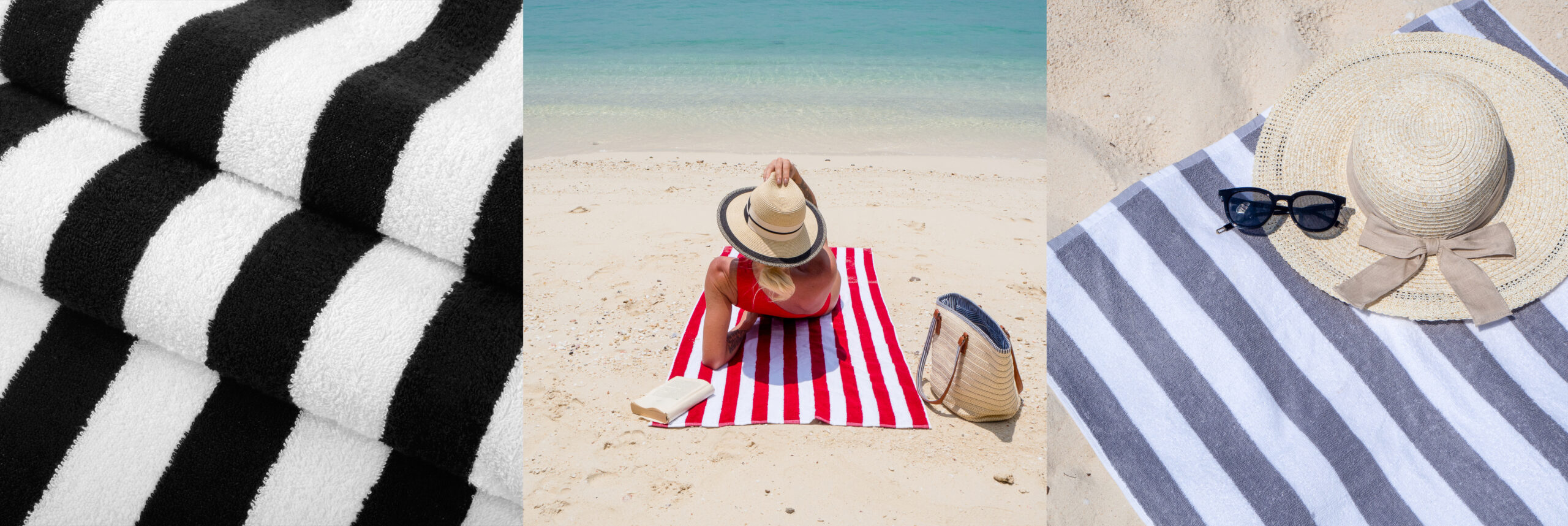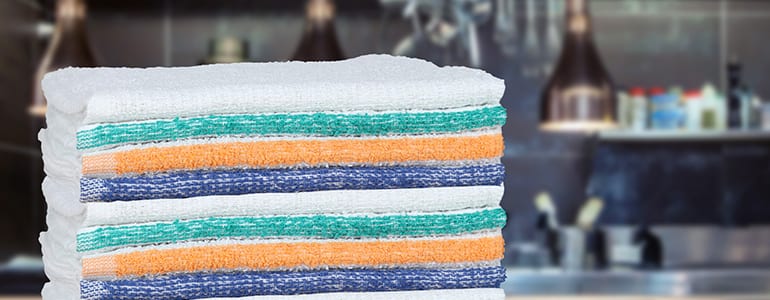
The wholesale bar mop’s green beginnings.
The hospitality industry runs on bar mops. Every year, restaurants, bars, and hotels use billions of these cheap absorbent striped towels. However, ask any laundry, and they will tell you that the most you could ever get out of a bar mop is five or six turns. Before long, they get greased up, burned, thrown out, or disintegrate. To keep up with demand, reduce costs, and reduce the industry’s carbon footprint, mills have adopted the 3R principle of waste management (Reduce-Reuse-Recycle).
The cotton-growing process takes 150-180 days and requires an abundance of water, pesticides, and energy to process raw cotton fibers into viable yarn. According to WWF, it takes more than 2,500 gallons of water to produce just one pound of cotton, which roughly equals a shirt and pants. In developing countries, where the bulk of cotton is grown, both water and electricity are usually non-renewable resources. Therefore, spinning mills developed new processes to combat the waste, pollution, and sustainability issues in the wake of global warming and green production pressure. Cotton (a non-edible crop) uses 3% of the total amount of water consumed by agriculture. Making fabric out of regenerated cotton uses 95% less water than virgin cotton products.
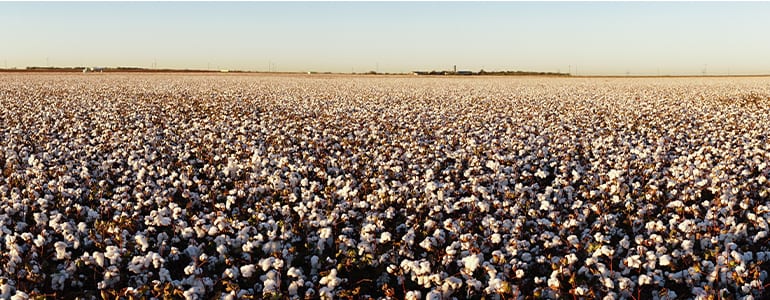
Sustainable cotton-growing practices include the adoption of better irrigation practices. Farmers in developing countries work with experts from the C&A Foundation, Cotton Inc, and the WWF to improve water use efficiency. The manufacturing process (especially the dyeing process) uses a large amount of water and causes a large amount of pollution. New dyeing methods have recently come on the market. Towels like the Clear Water Cabana and Salon Towels use no water in the dying process, and incredibly, are also bleach-safe (a side effect of the new dying method).
Before regenerated cotton, most cotton apparel ended up in landfills. Some old clothing had a second lease of life in thrift stores before also heading to the dump.
A quick note – donate all used clothing to a thrift store no matter how beat up it appears. They will salvage what they can, and send the rest to be reclaimed by rag manufacturers (like us). If clothing is degraded beyond wiping status, the cotton will be regenerated.
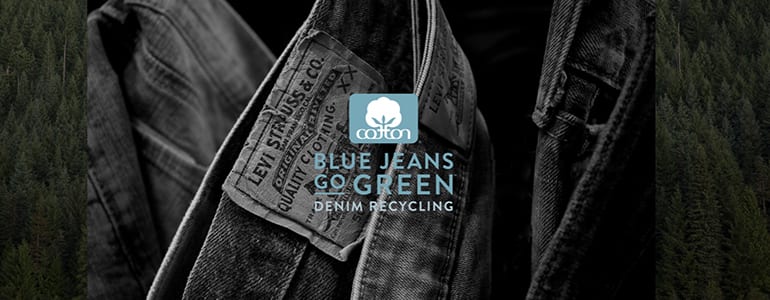
Cotton regeneration got the attention of consumers when, in 2015, Levi Strauss & Co launched the world’s first jeans made from discarded denim fabrics and cotton. However, bar mops have been green for much longer.
Since barmops are used for cleaning, using regenerated, and recycled cotton made sense from fiscal and sustainable points of view. During the bar mop manufacturing process, mills use mostly low-grade 10Single (10s) yarn in all three directions (Pile, Warp, and Weft). More about cotton types and uses can be found here. 10s yarn is produced using a percentage of waste cotton. To keep the strength of the yarn, manufacturers blend virgin cotton (from a higher grade, e.g., 16s) with waste cotton. Because this process uses a blend of cotton yarn is not uniform, strength is low, and the textile has a ‘hairy’ appearance.
Regenerated Cotton production Process:
The regenerated cotton process breaks used cotton and waste finished fabrics down to the fiber level then blend with virgin cotton to create new yarn. Post-consumer fabric is collected from thrift stores and public recycling centers. Pre-consumer fabric (the offcuts of T-shirts etc) are, cut into manageable strips, sorted for color, and washed (the strips below are ready for regeneration).
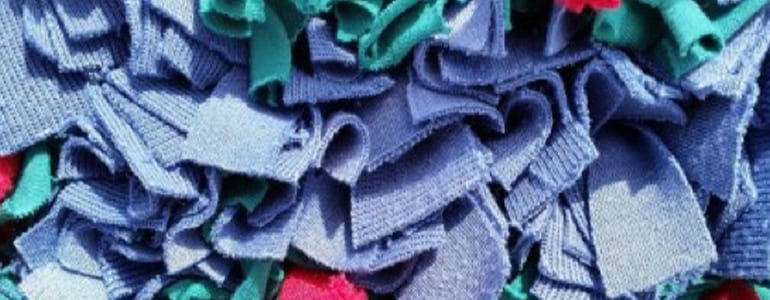
Fibers are fed into a mechanical shredder where tremendous forces are applied to break fibers down. The new brittle cotton fibers that need to be handled with delicacy. A blowroom is used to gently loosen and separate the new fibers, air cleaning them in the process. It is here that virgin cotton (that has also been through the the same cleaning and separating process) is blended with the regenerated cotton and packaged in bales for the spinning mill to finish.
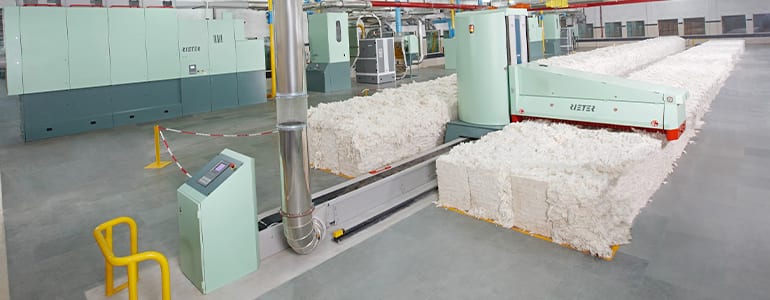
The resulting yarn is less optically bright than pure cotton products, but may be treated with dies and bleaching to attain more vibrant results. Naturally, the regenerated cotton will have the appearance of the materials that were broken down (e.g. Denim fibers will have blue hues).
